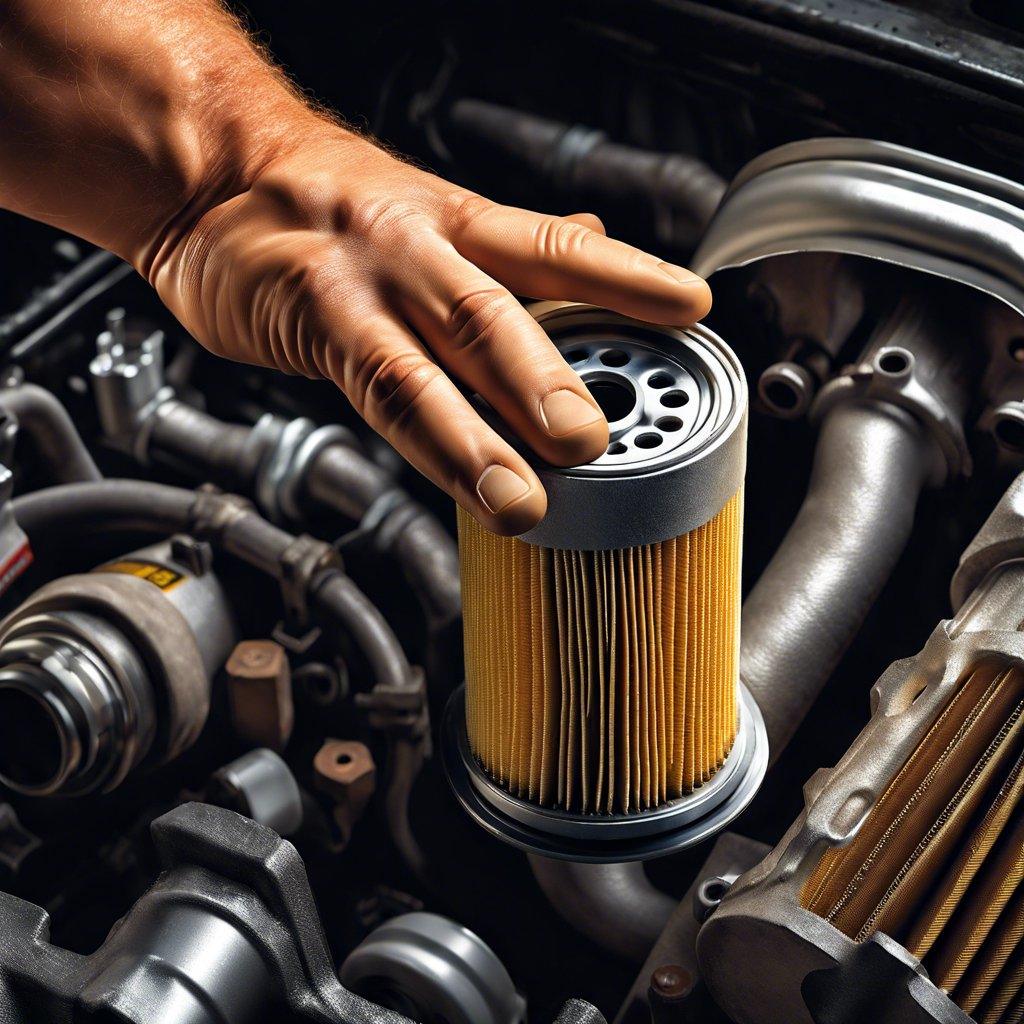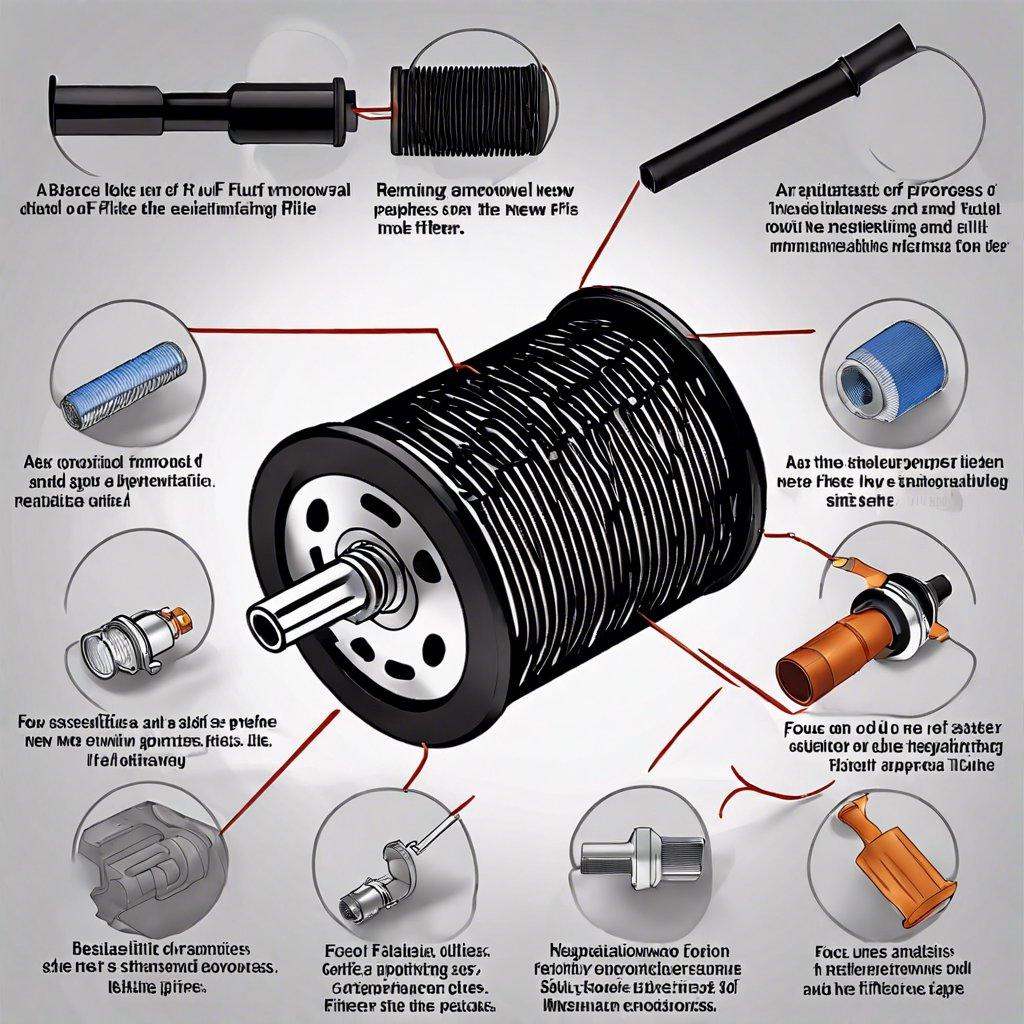How to Replace a Fuel Filter: DIY Tips
Mastering the Art of Fuel Filter Replacement: A Seamless DIY Guide

Understanding the Importance of Fuel Filter Replacement
The fuel filter is a critical component in your vehicle’s engine, responsible for trapping dirt, debris, and other contaminants that could damage the fuel system. Regularly replacing the fuel filter is essential to ensure optimal engine performance, fuel efficiency, and longevity.
Preparing for the Task
Before you begin the replacement process, ensure you have the necessary tools and materials, including the correct replacement fuel filter, a catch pan to collect any spilled fuel, and proper personal protective equipment (PPE) such as gloves and eye protection.
Locating the Fuel Filter
The fuel filter is typically located in the engine bay, near the fuel pump or along the fuel line. Consult your vehicle’s owner’s manual or repair manual to identify the exact location of the fuel filter.
Draining the Fuel System
To minimize the risk of fuel spillage, it’s crucial to relieve the fuel system pressure before attempting to remove the fuel filter. This can be done by disconnecting the fuel pump fuse or relay and starting the engine until it stalls.
Removing the Old Fuel Filter
Once the fuel system is depressurized, use the appropriate tools to loosen and remove the old fuel filter. Be prepared for a small amount of fuel to spill, and ensure the area is well-ventilated.
Installing the New Fuel Filter
Carefully install the new fuel filter, ensuring it is oriented correctly and that all connections are secure. Refer to the manufacturer’s instructions for the proper installation process.
Restoring the Fuel System
After the new fuel filter is in place, reconnect the fuel pump fuse or relay and start the engine. Check for any leaks and allow the fuel system to pressurize before taking the vehicle for a test drive.
Disposing of the Old Fuel Filter
Properly dispose of the old fuel filter in accordance with local environmental regulations, as it may contain residual fuel and contaminants.
Verifying the Repair
Monitor the vehicle’s performance after the fuel filter replacement, ensuring there are no issues with engine operation, fuel economy, or any other signs of fuel system problems.
Replacing the fuel filter is a straightforward DIY task that can help maintain the health and efficiency of your vehicle’s engine. By following this guide, you can master the art of fuel filter replacement and keep your vehicle running at its best.
Fuel Filter Swap: Unlocking Optimal Engine Performance with Ease
The fuel filter plays a crucial role in ensuring your engine’s optimal performance and longevity. Over time, this essential component can become clogged with impurities, restricting fuel flow and compromising engine efficiency. Timely fuel filter replacement is a simple yet effective way to maintain your vehicle’s power, fuel economy, and overall reliability.
Preparing for the Fuel Filter Swap
Before beginning the replacement process, ensure you have the following essential tools and materials on hand:
- Replacement fuel filter (consult your owner’s manual or a trusted auto parts store for the correct filter)
- Wrenches or sockets to disconnect the old filter
- Rags or absorbent materials to catch any fuel spillage
- Gloves to protect your hands
Step-by-Step Fuel Filter Replacement
1. Locate the fuel filter: The fuel filter is typically located near the fuel tank or along the fuel line. Refer to your vehicle’s service manual for the exact location.
2. Relieve fuel system pressure: Consult your owner’s manual for the proper procedure to relieve fuel system pressure, which may involve running the engine or using a special tool.
3. Disconnect the fuel lines: Using the appropriate wrenches or sockets, carefully disconnect the fuel lines from the old fuel filter.
4. Remove the old fuel filter: Unscrew or unbolt the old fuel filter and remove it from the vehicle.
5. Install the new fuel filter: Ensure the new filter is oriented correctly, then secure it in place by tightening the mounting hardware.
6. Reconnect the fuel lines: Carefully reconnect the fuel lines to the new filter, ensuring a tight and secure fit.
7. Start the engine and check for leaks: Turn on the ignition and start the engine, then inspect the fuel filter and surrounding area for any signs of leakage.
Maintaining Optimal Engine Performance
Regular fuel filter replacement is a simple yet essential maintenance task that can help maintain your engine’s optimal performance. By following the steps outlined above, you can easily swap out the old fuel filter and unlock the full potential of your vehicle’s power and efficiency.
| Fuel Filter Replacement Frequency | Typical Recommendation |
|---|---|
| Gasoline Engines | Every 30,000 to 50,000 miles |
| Diesel Engines | Every 10,000 to 15,000 miles |
Remember to consult your owner’s manual or a trusted automotive professional for the specific recommendations applicable to your vehicle.
Conquer Fuel Filtration Challenges: Empowering DIY Mechanics for Peak Efficiency
Mastering Fuel Filter Replacement: A Step-by-Step Guide
Maintaining the health of your vehicle’s fuel system is crucial for optimal performance and efficiency. One of the key components in this system is the fuel filter, which plays a vital role in removing impurities and contaminants from the fuel before it reaches the engine. In this comprehensive guide, we will walk you through the process of replacing a fuel filter, empowering you as a DIY mechanic to keep your vehicle running at its best.
Understanding the Importance of Fuel Filtration
The fuel filter acts as a gatekeeper, trapping dirt, debris, and other particles that can potentially damage sensitive fuel system components, such as the fuel pump and injectors. Regularly replacing the fuel filter is essential to ensure a steady flow of clean fuel, which in turn helps maintain engine performance, fuel efficiency, and overall vehicle reliability.
Before you begin the fuel filter replacement process, ensure that you have the necessary tools and equipment, including a new fuel filter that is compatible with your vehicle’s make, model, and year. Additionally, familiarize yourself with the location of the fuel filter in your vehicle and the specific steps required for its replacement.
- Locate the Fuel Filter: Consult your vehicle’s owner’s manual or service information to identify the location of the fuel filter. It is typically located along the fuel line, either near the fuel tank or the engine.
- Relieve Fuel System Pressure: Safely release the fuel system pressure to prevent fuel leaks and potential hazards.
- Disconnect the Fuel Lines: Carefully disconnect the fuel lines from the old fuel filter, taking note of their orientation to ensure proper reconnection.
- Remove the Old Fuel Filter: Unscrew or detach the old fuel filter from its mounting location.
- Install the New Fuel Filter: Carefully install the new fuel filter, ensuring that the flow direction matches the arrow or markings on the filter.
- Reconnect the Fuel Lines: Reconnect the fuel lines to the new filter, making sure they are securely fastened.
- Check for Leaks: Start the engine and inspect the fuel filter and connections for any signs of leakage.
Maintaining Peak Efficiency
Regular fuel filter replacement is a crucial aspect of vehicle maintenance. Consult your owner’s manual or a trusted mechanic to determine the recommended replacement interval for your specific vehicle. By staying proactive with fuel filter replacements, you can ensure optimal engine performance, fuel efficiency, and the longevity of your vehicle’s fuel system components.
| Fuel Filter Replacement Tips |
|---|
| Use Genuine Parts: Opt for fuel filters that are specifically designed and approved for your vehicle to ensure compatibility and performance. |
| Dispose of Old Filters Properly: Follow local regulations and environmental guidelines when disposing of used fuel filters to minimize the impact on the environment. |
| Keep Records: Maintain a log of your fuel filter replacement history to stay on top of routine maintenance and ensure timely replacements. |
Fuel Filter Renewal: Revitalizing Your Vehicle’s Heart with Expert DIY Tactics
Understanding the Fuel Filter
The fuel filter plays a crucial role in your vehicle’s performance, acting as a guardian against impurities and contaminants that can wreak havoc on your engine. Regular replacement of this unsung hero is essential to maintain the health and longevity of your car.
Before embarking on your fuel filter replacement journey, ensure you have the necessary tools and materials on hand, including a new fuel filter, a drain pan, gloves, and a wrench or socket set. Familiarize yourself with the location of the fuel filter in your specific vehicle model to streamline the process.
- Locate the Fuel Filter: Consult your vehicle’s owner’s manual or refer to the diagram to identify the precise location of the fuel filter. This is typically situated along the fuel line, often near the fuel tank or engine.
- Relieve Fuel System Pressure: To prevent fuel leaks and ensure your safety, release the pressure in the fuel system before beginning the replacement. This can be done by disconnecting the fuel pump fuse or relay.
- Disconnect the Fuel Lines: Using the appropriate tools, carefully disconnect the fuel lines from the fuel filter, taking note of their positions for proper reassembly.
- Remove the Old Fuel Filter: Unscrew or detach the old fuel filter from its mounting position. Dispose of the used filter in accordance with local regulations.
- Install the New Fuel Filter:
- Ensure the flow direction of the new filter matches the original installation.
- Reconnect the fuel lines to the new filter, securing them tightly.
- Reinstall the filter in its designated location and secure it firmly.
- Restore Fuel System Pressure:
Step Action 1 Reconnect the fuel pump fuse or relay. 2 Turn the ignition key to the “ON” position, but do not start the engine. 3 Allow the fuel system to pressurize (typically 30-60 seconds). - Start the Engine and Check for Leaks:
- Start the engine and observe for any fuel leaks around the new fuel filter.
- If leaks are present, turn off the engine and tighten the connections or check for proper filter installation.
Maintaining Optimal Fuel System Health
Regular fuel filter replacement, in conjunction with other routine maintenance tasks, is crucial for ensuring your vehicle’s optimal performance and longevity. By following these expert DIY tactics, you can revitalize your car’s heart and enjoy a smooth, efficient ride for miles to come.




Post Comment